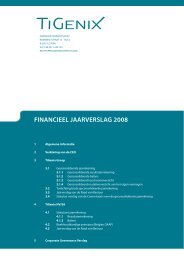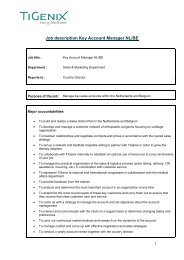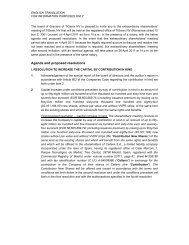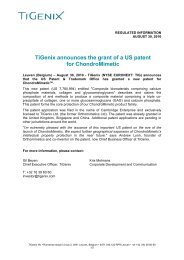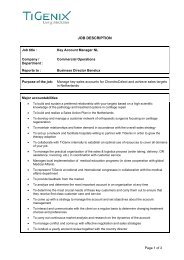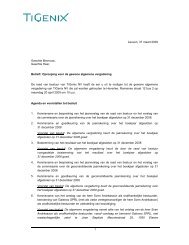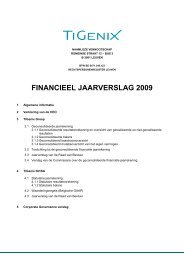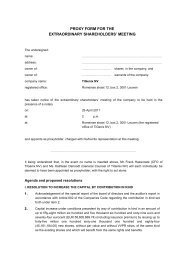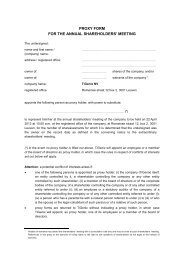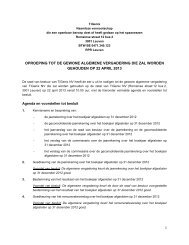ANNUAL REPORT 2012 - TiGenix
ANNUAL REPORT 2012 - TiGenix
ANNUAL REPORT 2012 - TiGenix
Create successful ePaper yourself
Turn your PDF publications into a flip-book with our unique Google optimized e-Paper software.
11.5.2.2. Basis of consolidation<br />
The consolidated financial statements<br />
incorporate the financial statements of the<br />
Company and entities controlled by the<br />
Company (its subsidiaries). Entities controlled<br />
by the Group have been fully consolidated.<br />
Control is achieved where the Company<br />
has the power to govern the financial and<br />
operating policies of an entity so as to obtain<br />
benefits from its activities.<br />
Income and expenses of subsidiaries<br />
acquired or disposed of during the year are<br />
included in the consolidated statement of<br />
comprehensive income from the effective<br />
date of acquisition and up to the effective<br />
date of disposal, as appropriate. Total<br />
comprehensive income of subsidiaries is<br />
attributed to the owners of the Company and<br />
to the non-controlling interests.<br />
All significant intra-group transactions,<br />
balances, income and expenses are<br />
eliminated in consolidation.<br />
11.5.2.3. Foreign currency translation<br />
In preparing the financial statements of<br />
each individual group entity, transactions in<br />
currencies other than the entity’s functional<br />
currency (foreign currencies) are recognized<br />
at the rates of exchange prevailing at the<br />
dates of the transactions. At the end of<br />
each reporting period, monetary items<br />
denominated in foreign currencies are<br />
retranslated at the rates prevailing at that<br />
date. Non-monetary items carried at fair<br />
value that are denominated in foreign<br />
currencies are retranslated at the rates<br />
prevailing at the date when the fair value<br />
was determined. Non-monetary items that<br />
are measured in terms of historical cost in a<br />
foreign currency are not retranslated.<br />
Exchange differences arising on the<br />
settlement of monetary items or on translating<br />
monetary items at rates different from those<br />
at which they were translated on initial<br />
recognition during the period or in previous<br />
financial statements shall be recognised in<br />
profit or loss in the period in which they arise.<br />
For the purposes of presenting consolidated<br />
financial statements, the assets and liabilities<br />
of the Group’s foreign operations are<br />
translated into Euro using exchange rates<br />
prevailing at the end of each reporting<br />
period. Income and expense items are<br />
translated at the average exchange rates for<br />
the period. Exchange differences arising, if<br />
any, are recognized in other comprehensive<br />
income and accumulated in equity<br />
(translation reserves).<br />
On the disposal of a foreign operation (i.e.<br />
a disposal of the Group’s entire interest in a<br />
foreign operation), or a disposal involving<br />
loss of control over a subsidiary that includes<br />
a foreign operation, all of the exchange<br />
differences accumulated in equity in respect<br />
of that operation attributable to the owners of<br />
the Company are reclassified to profit or loss.<br />
11.5.2.4. Segment information<br />
The Group’s activities are in one segment,<br />
biopharmaceuticals. There are no other<br />
significant classes of business, either singularly<br />
or in aggregate. Management reviews the<br />
operating results and operating plans and<br />
make resource allocation decisions on a<br />
company-wide basis, therefore <strong>TiGenix</strong><br />
operates as one segment.<br />
11.5.2.5. Business combinations<br />
Acquisitions of businesses are accounted<br />
for using the acquisition method. The<br />
113



